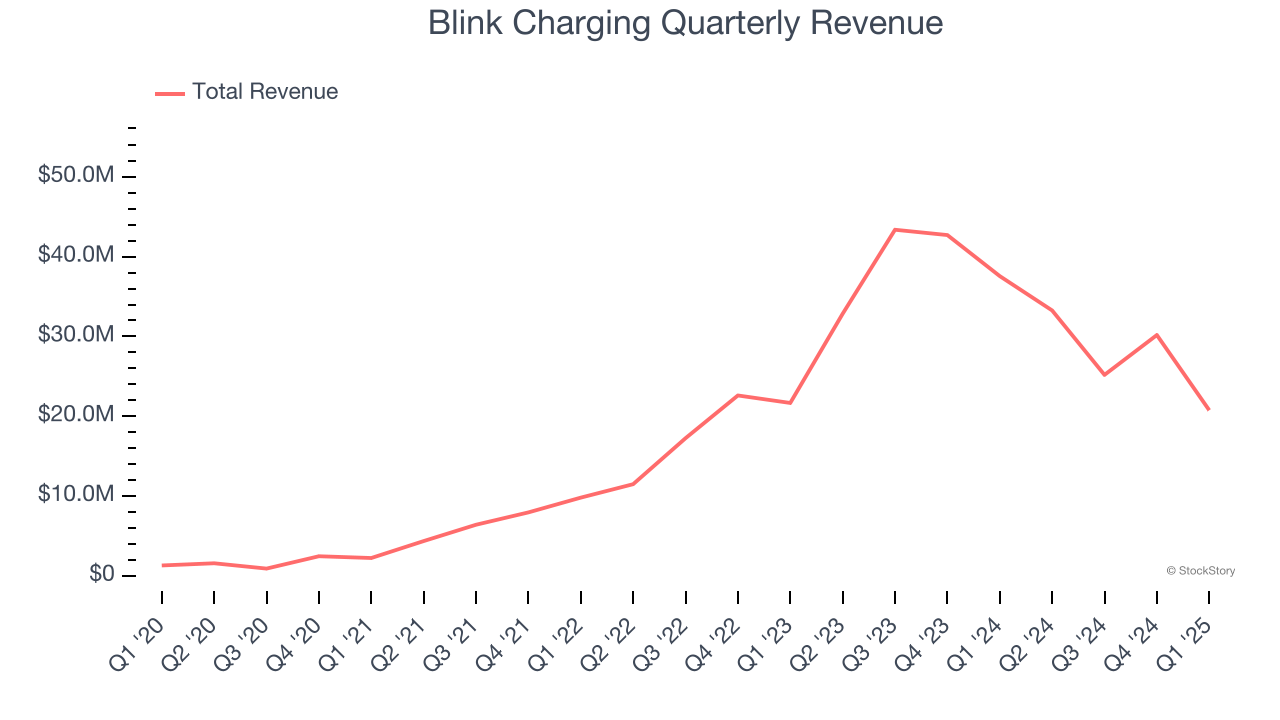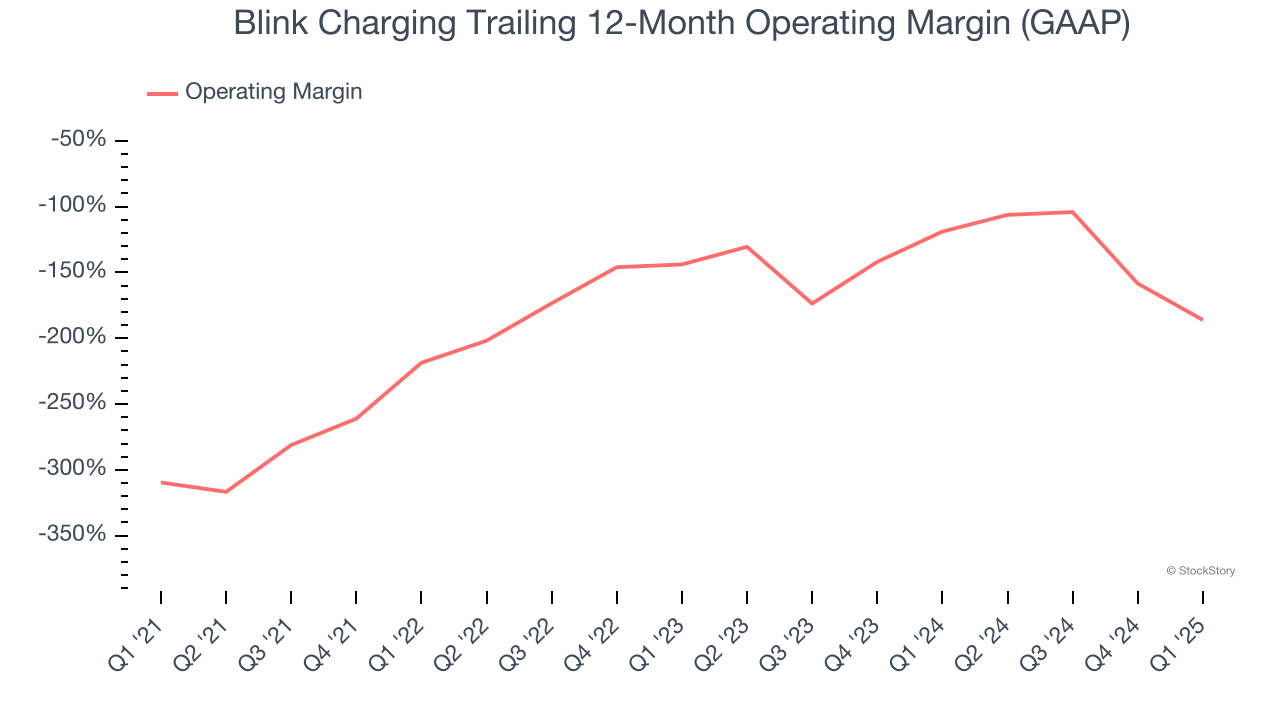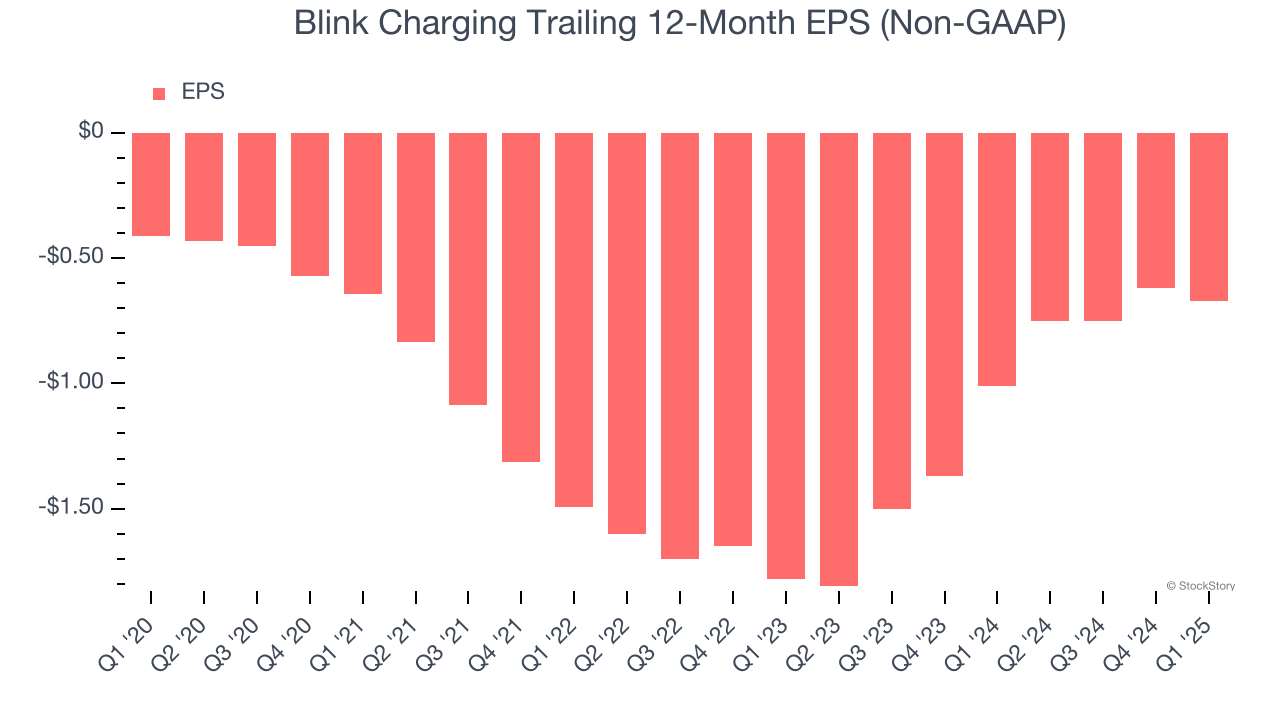
EV charging infrastructure provider Blink Charging (NASDAQ: BLNK) fell short of the market’s revenue expectations in Q1 CY2025, with sales falling 44.8% year on year to $20.75 million. Its non-GAAP loss of $0.18 per share was 52.1% below analysts’ consensus estimates.
Is now the time to buy Blink Charging? Find out by accessing our full research report, it’s free.
Blink Charging (BLNK) Q1 CY2025 Highlights:
- Revenue: $20.75 million vs analyst estimates of $27.43 million (44.8% year-on-year decline, 24.3% miss)
- Adjusted EPS: -$0.18 vs analyst expectations of -$0.12 (52.1% miss)
- Adjusted EBITDA: -$15.49 million vs analyst estimates of -$6.90 million (-74.6% margin, significant miss)
- Operating Margin: -102%, down from -46.5% in the same quarter last year
- Free Cash Flow was -$14.39 million compared to -$24.31 million in the same quarter last year
- Market Capitalization: $86.09 million
Company Overview
One of the first EV charging companies to go public, Blink Charging (NASDAQ: BLNK) is a manufacturer, owner, operator, and provider of electric vehicle charging equipment and networked EV charging services.
Sales Growth
Reviewing a company’s long-term sales performance reveals insights into its quality. Even a bad business can shine for one or two quarters, but a top-tier one grows for years. Thankfully, Blink Charging’s 99.3% annualized revenue growth over the last five years was incredible. Its growth beat the average industrials company and shows its offerings resonate with customers.

Long-term growth is the most important, but within industrials, a half-decade historical view may miss new industry trends or demand cycles. Blink Charging’s annualized revenue growth of 22.4% over the last two years is below its five-year trend, but we still think the results suggest healthy demand. Blink Charging recent performance stands out, especially when considering many similar Renewable Energy businesses faced declining sales because of cyclical headwinds. 
This quarter, Blink Charging missed Wall Street’s estimates and reported a rather uninspiring 44.8% year-on-year revenue decline, generating $20.75 million of revenue.
Looking ahead, sell-side analysts expect revenue to grow 24.5% over the next 12 months, an improvement versus the last two years. This projection is eye-popping and indicates its newer products and services will catalyze better top-line performance.
Software is eating the world and there is virtually no industry left that has been untouched by it. That drives increasing demand for tools helping software developers do their jobs, whether it be monitoring critical cloud infrastructure, integrating audio and video functionality, or ensuring smooth content streaming. Click here to access a free report on our 3 favorite stocks to play this generational megatrend.
Operating Margin
Operating margin is one of the best measures of profitability because it tells us how much money a company takes home after procuring and manufacturing its products, marketing and selling those products, and most importantly, keeping them relevant through research and development.
Blink Charging’s high expenses have contributed to an average operating margin of negative 155% over the last five years. Unprofitable industrials companies require extra attention because they could get caught swimming naked when the tide goes out. It’s hard to trust that the business can endure a full cycle.
On the plus side, Blink Charging’s operating margin rose over the last five years, as its sales growth gave it operating leverage. Still, it will take much more for the company to reach long-term profitability.

This quarter, Blink Charging generated a negative 102% operating margin. The company's consistent lack of profits raise a flag.
Earnings Per Share
We track the long-term change in earnings per share (EPS) for the same reason as long-term revenue growth. Compared to revenue, however, EPS highlights whether a company’s growth is profitable.
Blink Charging’s earnings losses deepened over the last five years as its EPS dropped 10.2% annually. We’ll keep a close eye on the company as diminishing earnings could imply changing secular trends and preferences.

Like with revenue, we analyze EPS over a shorter period to see if we are missing a change in the business.
For Blink Charging, its two-year annual EPS growth of 38.6% was higher than its five-year trend. Its improving earnings is an encouraging data point, but a caveat is that its EPS is still in the red.
In Q1, Blink Charging reported EPS at negative $0.18, down from negative $0.13 in the same quarter last year. This print missed analysts’ estimates. Over the next 12 months, Wall Street is optimistic. Analysts forecast Blink Charging’s full-year EPS of negative $0.67 will reach break even.
Key Takeaways from Blink Charging’s Q1 Results
We struggled to find many positives in these results. Its revenue missed significantly and its EBITDA fell short of Wall Street’s estimates. Overall, this was a weaker quarter. The stock traded down 8.4% to $0.79 immediately after reporting.
Blink Charging’s earnings report left more to be desired. Let’s look forward to see if this quarter has created an opportunity to buy the stock. We think that the latest quarter is only one piece of the longer-term business quality puzzle. Quality, when combined with valuation, can help determine if the stock is a buy. We cover that in our actionable full research report which you can read here, it’s free.





